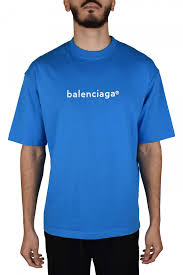Introduction to Balenciaga
Balenciaga, a name synonymous with luxury and innovation, has carved its niche in the world of fashion since its inception in 1917. Founded by Spanish designer Cristóbal Balenciaga, the brand has evolved from a small boutique in San Sebastián, Spain, to a powerhouse in the haute couture industry. Known for its bold designs and avant-garde aesthetics, Balenciaga has consistently pushed the boundaries of fashion, making it a pivotal player in the evolution of haute couture.
The Visionary Behind the Brand
Cristóbal Balenciaga was not just a designer; he was a visionary who understood the complexities of women’s bodies and the art of tailoring. His approach to fashion was revolutionary for his time. Balenciaga believed in creating clothing that offered both comfort and style, prioritizing the wearer’s experience. His ability to blend artistry with functionality set the foundation for what would become a legacy of excellence in haute couture.
Early Years and Rise to Fame
Balenciaga opened his first boutique in Spain in 1918, but it was his move to Paris in 1937 that marked the beginning of his international acclaim. In Paris, he presented collections that were unlike anything seen before. His designs often featured dramatic silhouettes, intricate detailing, and innovative techniques. The “Cocoon” coat and the “Barrio” dress are just a couple of examples that highlight his talent for redefining fashion norms.
Balenciaga’s Signature Style
Bold Silhouettes and Unique Textures
One of the hallmarks of Balenciaga clothing is its unique silhouettes. The designer had an uncanny ability to shape fabric into extraordinary forms. He often played with proportions, creating oversized garments that defied conventional sizing. This experimentation resulted in pieces that were both sculptural and wearable.
Balenciaga’s use of fabrics also set him apart. He was known for utilizing materials that added texture and depth to his designs. From luxurious silks to innovative synthetics, the textiles he chose were integral to the overall impact of his collections.
The Influence of Modernism
Balenciaga’s designs were deeply influenced by modern art and architecture. His work often reflected the clean lines and geometric shapes that defined the modernist movement. This connection to art made his collections not just fashion statements but also works of art that challenged traditional views of clothing.
Haute Couture: The Pinnacle of Fashion
What is Haute Couture?
Haute couture, meaning “high sewing” in French, refers to the creation of exclusive custom-fitted clothing. It represents the pinnacle of fashion, where craftsmanship meets creativity. To be classified as haute couture, a fashion house must adhere to strict guidelines set by the Chambre de commerce et d’industrie de Paris. These include creating made-to-order garments for private clients and using high-quality fabrics.
Balenciaga’s Contribution to Haute Couture
Balenciaga’s contributions to haute couture are immeasurable. His innovative techniques, such as the use of draping and the creation of garments that embraced the female form, set new standards in the industry. He was one of the first designers to introduce the concept of ready-to-wear while maintaining the exclusivity of haute couture. This approach allowed more women to experience the elegance of Balenciaga clothing, making high fashion more accessible.
The Legacy Continues
A New Era: Demna Gvasalia
After Cristóbal Balenciaga’s death in 1972, the brand went through various transformations. In 2015, Demna Gvasalia took the helm as the creative director, bringing a fresh perspective to the brand while honoring its heritage. Gvasalia is known for his streetwear influences and has successfully merged high fashion with contemporary culture, attracting a new generation of consumers.
Gvasalia’s designs often feature oversized silhouettes and a blend of casual and formal elements. His ability to reinterpret Balenciaga’s legacy has allowed the brand to thrive in the fast-paced world of modern fashion.
Innovative Marketing Strategies
In recent years, Balenciaga has also been at the forefront of innovative marketing strategies. From viral social media campaigns to collaborations with unexpected partners, the brand has embraced the digital age to engage with a wider audience. This modern approach has solidified Balenciaga’s position as a trendsetter in the fashion industry.
The Future of Balenciaga
Sustainability and Ethical Fashion
As the fashion industry grapples with environmental concerns, Balenciaga is making strides towards sustainability. The brand is increasingly focusing on ethical practices, from sourcing materials responsibly to minimizing waste in production. This commitment not only aligns with contemporary consumer values but also ensures that Balenciaga remains a relevant player in haute couture.
Continued Influence on Fashion
Balenciaga’s legacy of excellence is not just about its past; it’s about its future. The brand continues to inspire designers and fashion enthusiasts alike. Its influence can be seen in various aspects of fashion, from streetwear to haute couture, making it a cornerstone of contemporary style.
Conclusion
Balenciaga’s journey from a small boutique to a global luxury brand is a testament to its enduring legacy in haute couture. With a rich history marked by innovation and excellence, Balenciaga clothing represents the epitome of style and craftsmanship. As the brand continues to evolve under new leadership, its commitment to quality and creativity remains steadfast. The future looks bright for Balenciaga, ensuring that it will remain a vital force in the world of fashion for years to come.



